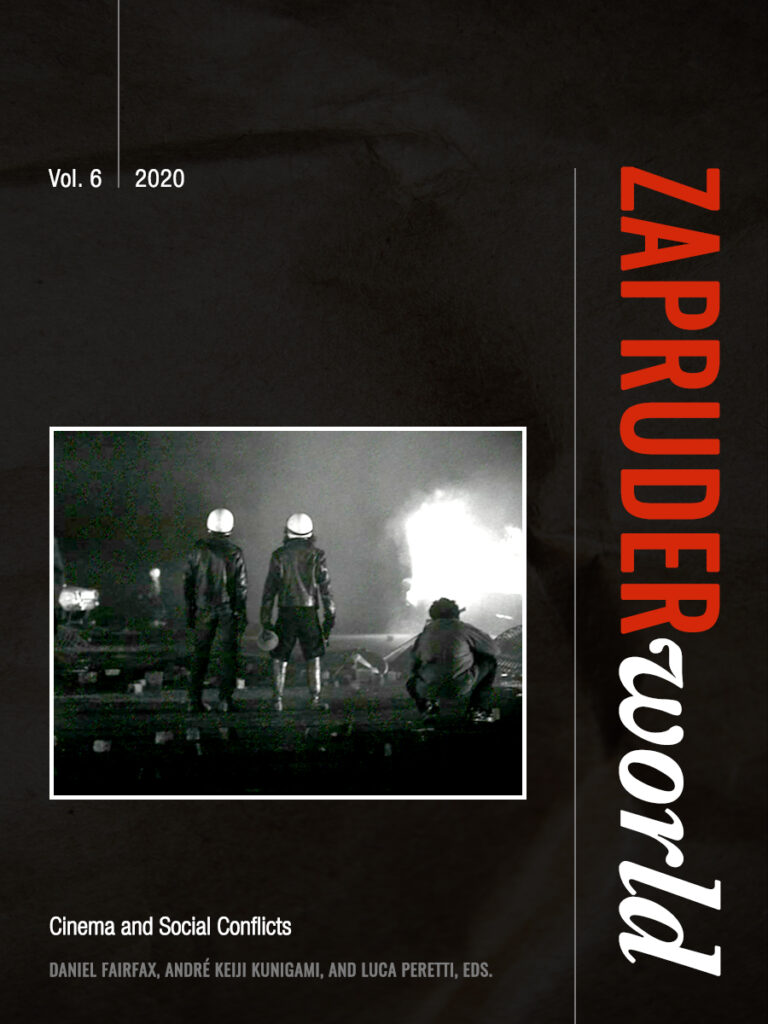In 1895, the Lumière brothers, deemed the inventors of cinema, placed their rudimentary camera in front of the women workers leaving their factory in the suburbs of Lyon. The short film, La Sortie de l’Usine Lumière (Workers Leaving The Lumière Factory in Lyon), was screened with others on December 28th, 1895, during the first ever public film screening in history. A year later, in the United States, W.K.L. Dickson—another film pioneer, less known but equally important—filmed men leaving the Winchester factory in New Haven, Connecticut. The beginning of film as we know it took place at the encounter between two highly representative apparatuses of modernity: the film camera and the factory. But the images of the apparently calm walking bodies of the factory workers remind us that the filmic image can conceal as much as it reveals: instead of modern labor exploitation, we see happy modern citizens. At the end of the nineteenth century, cinema was one of the several inventions during an era of profound technological transformations. And yet the practitioners of the new medium were already interested in the factories, which were among the main subjects of early cinema together with those coopted from the nineteenth century visual imaginary: family scenes, landscapes and ruins, notable men such as kings, presidents, and the Pope, who was filmed by Dickson in 1899.
This myth of origins of film shows that the relation between cinema and social conflicts is far more complex than the title of this issue might initially suggest. There are many ways in which we can imagine, research, and theorize the theme of cinema and social conflict. If the early days of cinema imagined a peaceful modern world of work and leisure, it is possible to state that the medium started its official life as an ideological machine whose political pressure point lay on the border of its visible frame—a fact that Harun Farocki’s film Arbeiter verlassen die Fabrik (Workers Leaving the Factory, 1995) has shown us through montage. In this sense, the inaugural relation between cinema and social conflicts raises questions at the very center of representation. Strikes, protests, colonial warfare and territorial invasions may not appear directly, but in many early films they nevertheless haunt the image from outside the frame. Think, for example, of the vast archive of documentary images of colonial spaces produced for the consumption of Europeans and North Americans as curiosities, which may have reached its most ironic form in the fake Africa portrayed in the Nordisk company’s short The Lion Hunt (Viggo Larsen, 1907).
Introduction
∴ Daniel Fairfax, André Keiji Kunigami, and Luca Peretti, eds.
Lang’s Fury Continues to Resonate in the #BlackLivesMatter Movement
∴ Cynthia D. Porter
The Post-Cinematic Gesture: Redhack
∴ Ekin Erkan
Cahiers du cinéma’s Maoist Turn and the Front Culturel Révolutionnaire
∴ Daniel Fairfax
Urban Stories of Conflicts: The Filmic Activity of Squatters in the “Productive City” of Rotterdam
∴ Renzo Sgolacchia
Counter-Information and Counter-Power: The Italian 60’s Newsreels
∴ Alessia Lombardini
The Neglected Spaces of Feminism and Queer in Contemporary Italian Political Cinema
∴ Dom Holdaway and Dalila Missero
Silent Suffragists: Activism, Popular Cinema, and Women’s Rights in 1910s America
∴ Daniel Lawrence Aufmann
Brazil in Social (Un)Rest: Cinema in a Provisional State
∴ Fabio Andrade
Yesterday
∴ Digital scholarly resources, archival links, images and more related to the topic of this volume.
Today
∴ Global and local organizations, movements, and networks inspired by the traditions explored in this volume.


